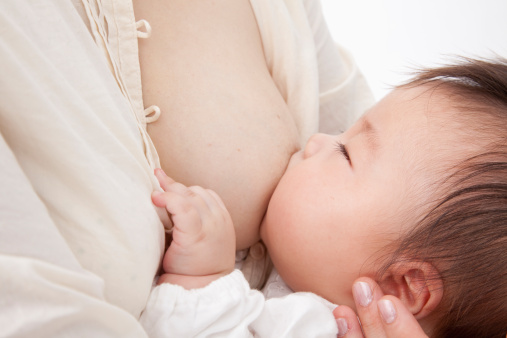AAP Reaffirms Breastfeeding Guidelines
2/27/2012
Breastfeeding is a natural and beneficial source of nutrition and provides the healthiest start for an infant. In addition to the nutritional benefits, breastfeeding promotes a unique and emotional connection between mother and baby. In the policy statement, “Breastfeeding and the Use of Human Milk,” published in the March 2012 issue of Pediatrics (published online Feb. 27), the American Academy of Pediatrics (AAP) reaffirms its recommendation of exclusive breastfeeding for about the first six months of a baby’s life, followed by breastfeeding in combination with the introduction of complementary foods until at least 12 months of age, and continuation of breastfeeding for as long as mutually desired by mother and baby.
This recommendation is supported by the health outcomes of exclusively breastfed infants and infants who never or only partially breastfed. Breastfeeding provides a protective effect against respiratory illnesses, ear infections, gastrointestinal diseases, and allergies including asthma, eczema and atopic dermatitis. The rate of sudden infant death syndrome (SIDS) is reduced by over a third in breastfed babies, and there is a 15 percent to 30 percent reduction in adolescent and adult obesity in breastfed vs. non-breastfed infants. Approximately 75 percent of newborn infants initiate breastfeeding. Hospital routines more and more attempt to accommodate the breastfeeding mother. Pediatricians promote the advantages of breastfeeding to mothers and infants, as well as the health risks of not breastfeeding. As such, choosing to breastfeed should be considered an investment in the short- and long-term health of the infant, rather than a lifestyle choice.


